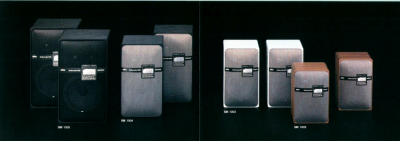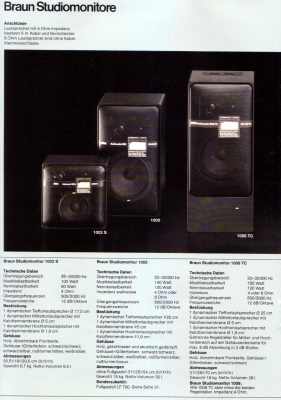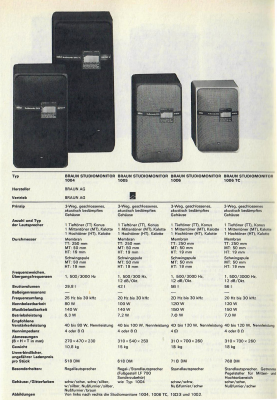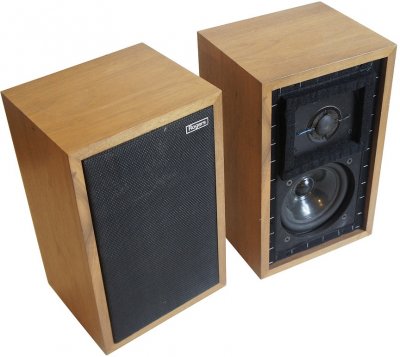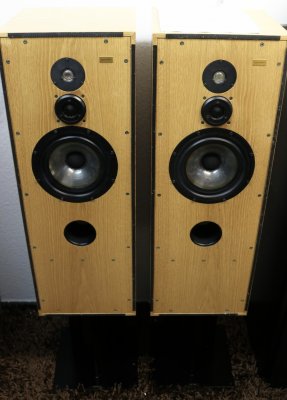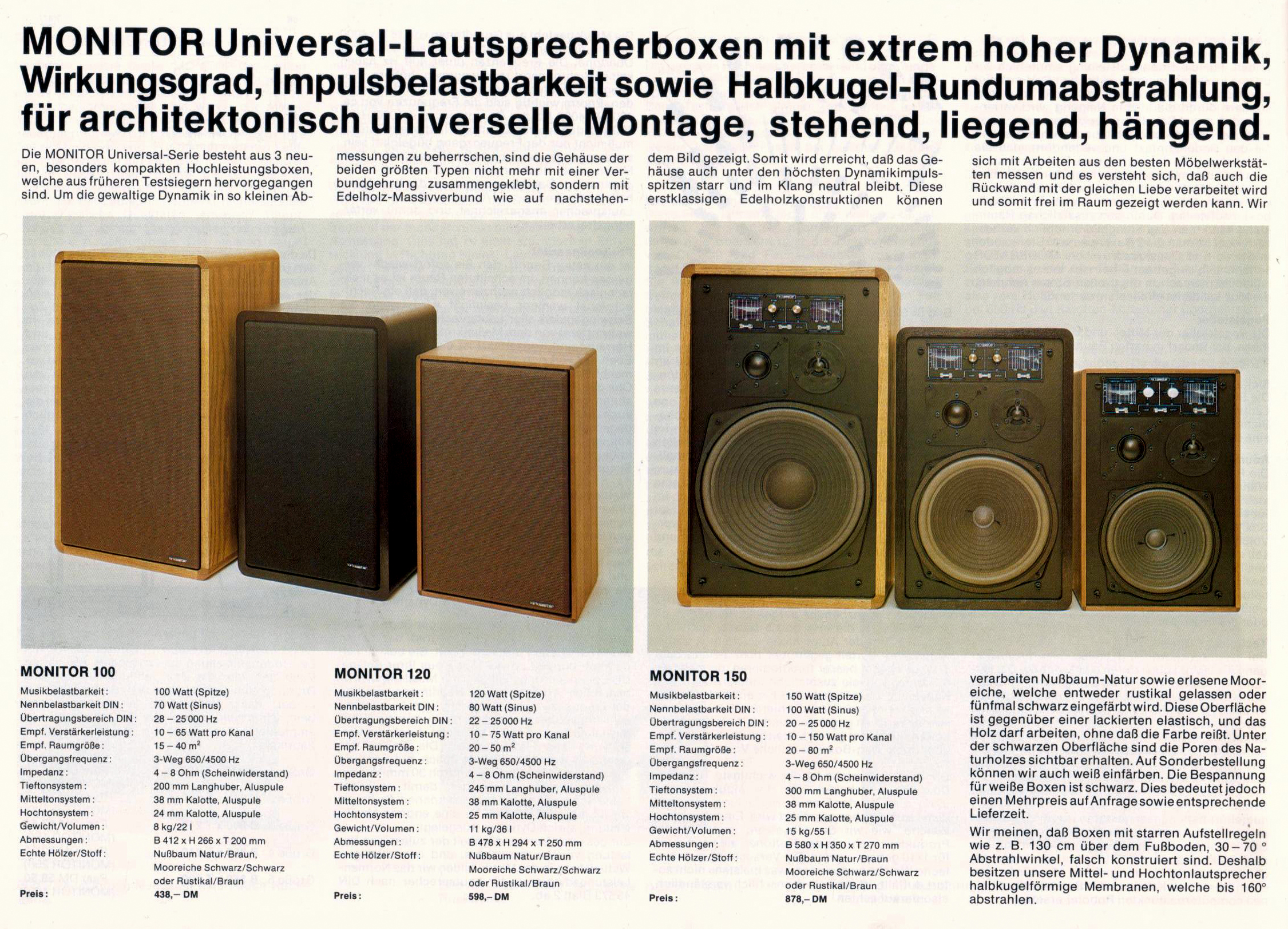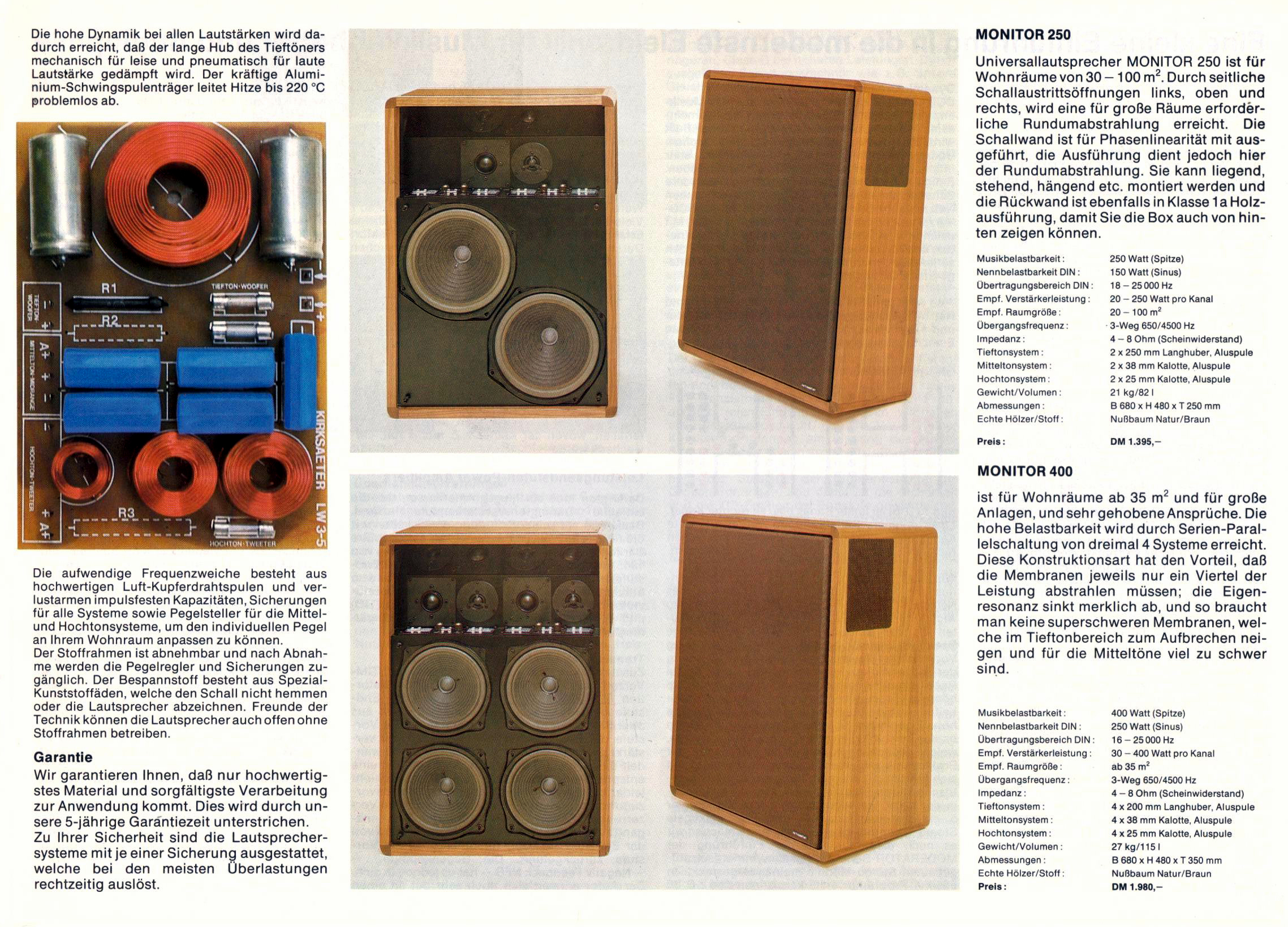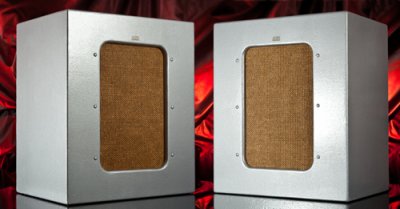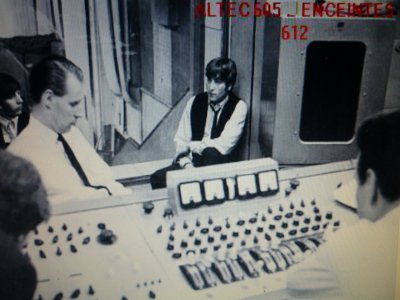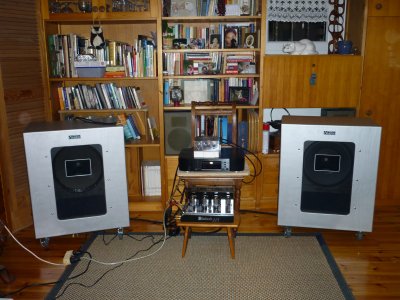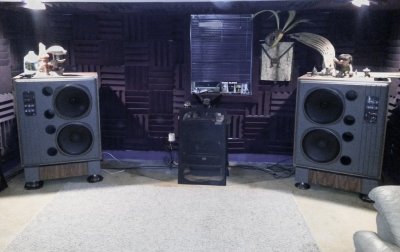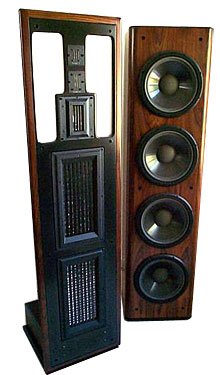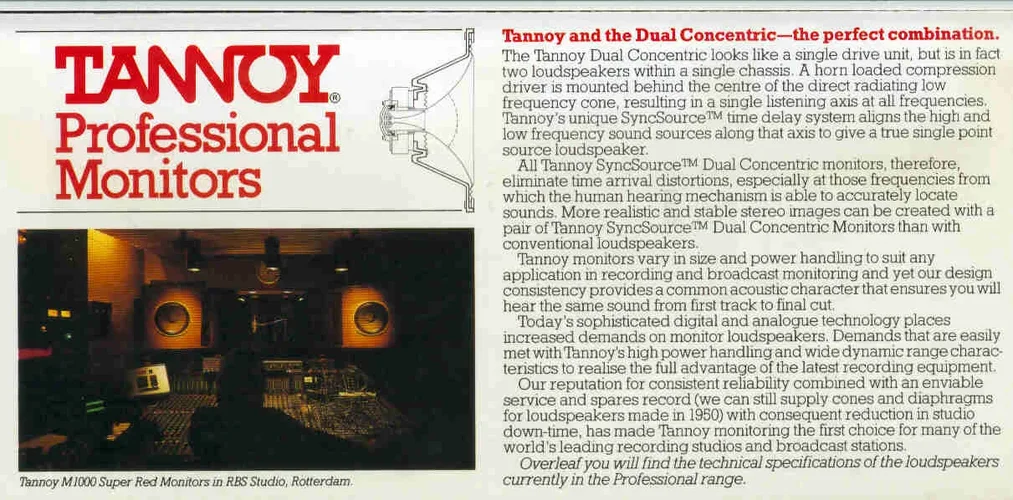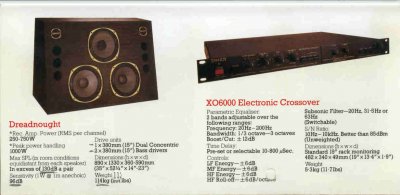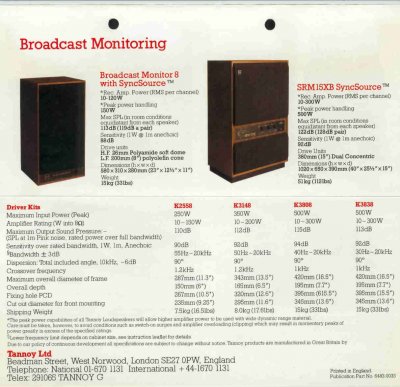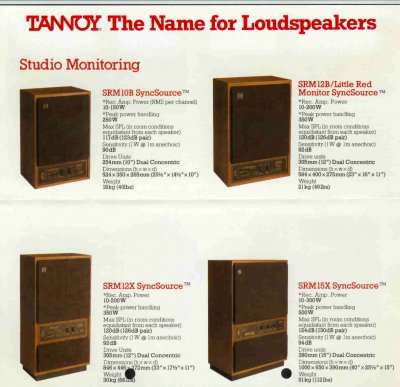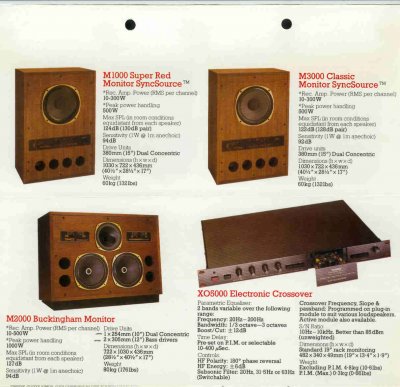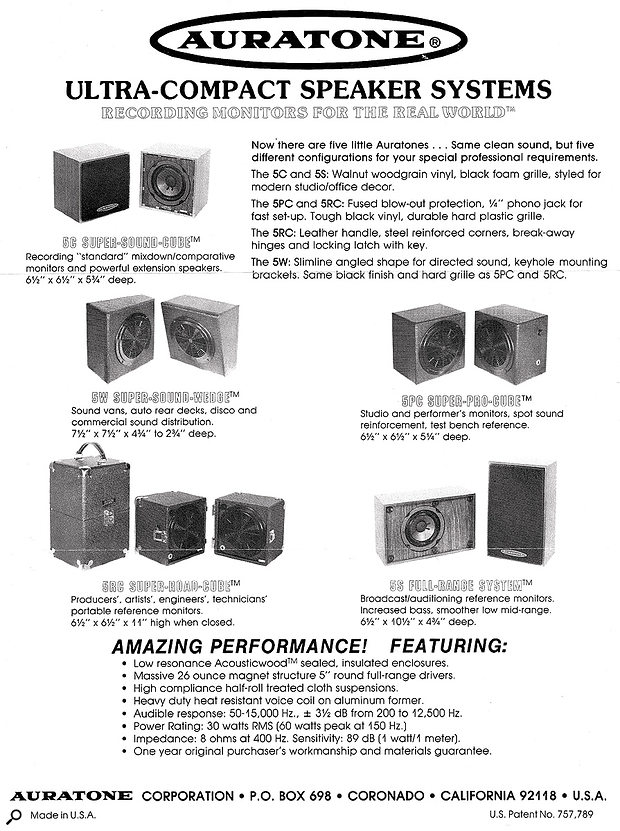App installieren
So wird die App in iOS installiert
Folge dem Video um zu sehen, wie unsere Website als Web-App auf dem Startbildschirm installiert werden kann.
Anmerkung: This feature may not be available in some browsers.
Du verwendest einen veralteten Browser. Es ist möglich, dass diese oder andere Websites nicht korrekt angezeigt werden.
Du solltest ein Upgrade durchführen oder einen alternativen Browser verwenden.
Du solltest ein Upgrade durchführen oder einen alternativen Browser verwenden.
Welche Studio Monitorboxen wurden in den 70igern so eingesetzt?
oli
*****
Die Klein + Hummel OY ?
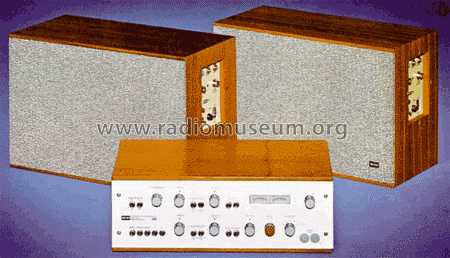
 www.radiomuseum.org
www.radiomuseum.org

Regielautsprecher OY Speaker-P Klein & Hummel; Stuttgart-Kemnat Marke |Radiomuseum.org
Regielautsprecher OY Speaker-P Klein & Hummel; Stuttgart-Kemnat Marke: K+H,, build 1968 ??, 10 pictures, 10 schematics, Germany, tubes, semiconductors
NickLimegrove
Flexiganer
Soundwise unlike
music maker - advanced beginner
Mir fallen da die bekannten Yamaha NS 10 M ein.
Für das Leveling bei nicht zu hoher Lautstärke finde ich die super und will sie nicht mehr hergeben.
Für das Leveling bei nicht zu hoher Lautstärke finde ich die super und will sie nicht mehr hergeben.
Zuletzt bearbeitet:
oli
*****
Mir fallen da die bekannten Yamaha NS 10 M ein.
Tatsächlich, ja krass, die sind schon 1978 auf den Markt gekommen!
Das hätte ich nie im Leben gedacht.
"Originally conceived as a domestic hi-fi speaker, the NS-10 was designed by Akira Nakamura and launched in 1978.[2][3]The speaker was poorly received. Recording engineers came to rely on the NS-10 as a benchmark. The model was discontinued in 2001."
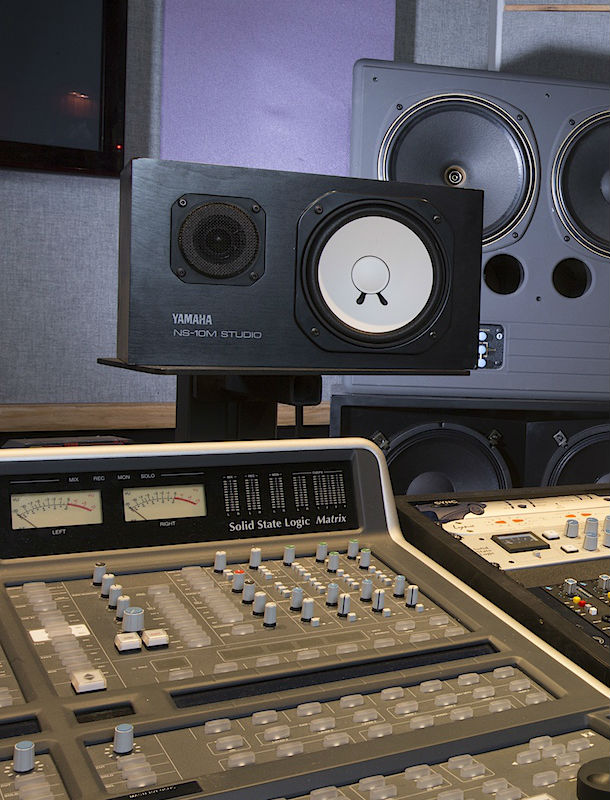
Yamaha NS-10 - Wikipedia
sbur
„Zwischen Reiz und Reaktion liegt ein Raum.“
Ich erinnere mich das Mike Oldfield seinerzeit Eastlake Audio Monitore im Studio als auch live auf Tour verwendet hat -> http://www.eastlake-audio.co.uk. Interessanterweise gibt es auch eine Firma Westlake. Ich meine die hängen zusammen. http://audioheritage.org/vbulletin/...The-original-Westlake-Sierra-Eastlake-monitor
ossi-lator
||||||||||
Die Klein + Hummel OY ?

Regielautsprecher OY Speaker-P Klein & Hummel; Stuttgart-Kemnat Marke |Radiomuseum.org
Regielautsprecher OY Speaker-P Klein & Hummel; Stuttgart-Kemnat Marke: K+H,, build 1968 ??, 10 pictures, 10 schematics, Germany, tubes, semiconductorswww.radiomuseum.org
Ich hab die OY Aktivmonitore seit 1998 im Einsatz, top Teile. zusammen mit dem neueren O800 Sub eine mega kombi.
Grundsätzlich ist alles von Klein und Hummel empfehlenswert, weil großartige deutsche Ingenieurkunst.
oli
*****
Habe auf dem englischen Wikipediartikel zum Thema Studiolautsprecher (Studio Monitor) nen Abschnitt zu 60er-70er Jahre Boxen gefunden:
"To complement its larger two-way monitors for studio use, the BBC developed a small speaker for near-field monitoring of the frequency range from 400 Hz to about 20 kHz for its outside broadcasting monitoring. The principal constraints were space and situations where using headphones is unsatisfactory, such as in mobile broadcasting vans. Based on scaling tests done in 1968, and detailed audio work against the LS5/8 – a large "Grade I monitor" already in use at the time – and with live sources, the BBC Research Department developed the LS3/5, which became the famous LS3/5A that was used from 1975 to much of the 1990s and beyond by the BBC and audiophiles alike.[6][7][8]
In the late 1960s JBL introduced two monitors which helped secure them pre-eminence in the industry. The 4320 was a direct competitor to the Altec 604 but was a more accurate and powerful speaker and it quickly made inroads against the industry standard. However, it was the more compact 4310 that revolutionized monitoring by introducing the idea of close or "nearfield" monitoring. (The sound field very close to a sound source is called the "near-field." By "very close" is meant in the predominantly direct, rather than reflected, sound field. A near-field speaker is a compact studio monitor designed for listening at close distances (3 to 5 feet (0.9 to 1.5 m)), so, in theory, the effects of poor room acoustics are greatly reduced.)
The 4310 was small enough to be placed on the recording console and listened to from much closer distances than the traditional large wall-(or "soffit") mounted main monitors. As a result, studio-acoustic problems were minimized. Smaller studios found the 4310 ideal and that monitor and its successor, the 4311, became studio fixtures throughout the 1970s. Ironically, the 4310 had been designed to replicate the sonic idiosyncrasies of the Altec 604 but in a smaller package to cater for the technical needs of the time.
The 4311 was so popular with professionals that JBL introduced a domestic version for the burgeoning home-audio market. This speaker, the JBL L-100, (or "Century") was a massive success and became the biggest-selling hi-fi speaker ever within a few years. By 1975, JBL overtook Altec as the monitor of choice for most studios. The major studios continued to use huge designs mounted on the wall which were able to produce prodigious SPL's and amounts of bass.
This trend reached its zenith with The Who's use of a dozen JBL 4350 monitors, each capable of 125 dB and containing two fifteen-inch woofers and a twelve-inch mid-bass driver. Most studios, however, also used more modest monitoring devices to check how recordings would sound through car speakers and cheap home systems. A favourite "grot-box" monitor employed in this way was the Auratone 5C, a crude single-driver device that gave a reasonable facsimile of typical lo-fi sound.
However, a backlash against the behemoth monitor was soon to take place. With the advent of punk, new wave, indie, and lo-fi, a reaction to high-tech recording and large corporate-style studios set in and do-it-yourself recording methods became the vogue. Smaller, less expensive, recording studios needed smaller, less expensive monitors and the Yamaha NS-10, a design introduced in 1978 ironically for the home audio market, became the monitor of choice for many studios in the 1980s.[9] While its sound-quality has often been derided, even by those who monitor through it, the NS-10 continues in use to this day and many more successful recordings have been produced with its aid over the past twenty five years than with any other monitor.[10][11]"
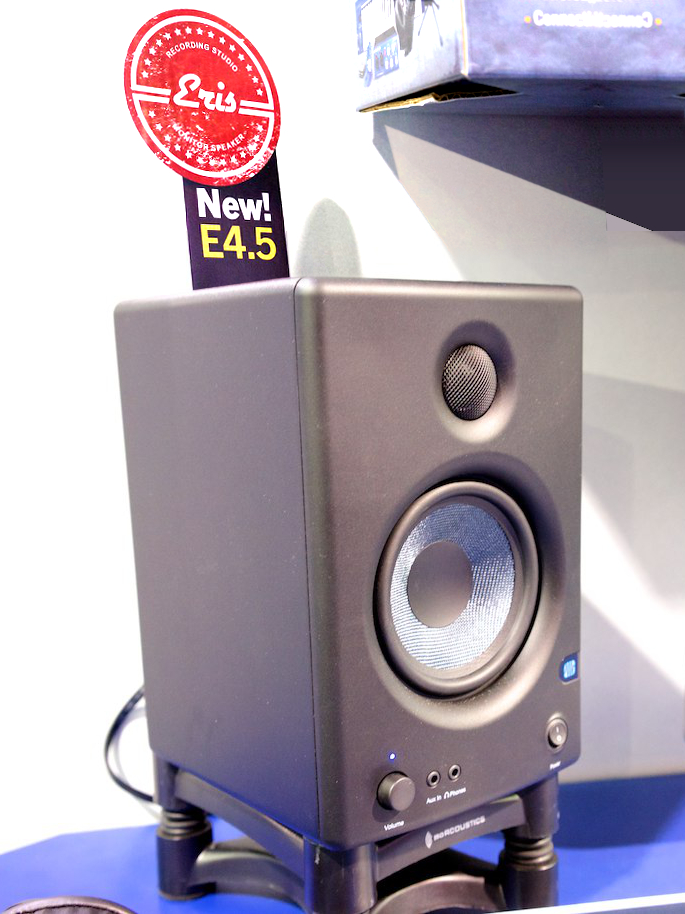
 en.wikipedia.org
en.wikipedia.org
"To complement its larger two-way monitors for studio use, the BBC developed a small speaker for near-field monitoring of the frequency range from 400 Hz to about 20 kHz for its outside broadcasting monitoring. The principal constraints were space and situations where using headphones is unsatisfactory, such as in mobile broadcasting vans. Based on scaling tests done in 1968, and detailed audio work against the LS5/8 – a large "Grade I monitor" already in use at the time – and with live sources, the BBC Research Department developed the LS3/5, which became the famous LS3/5A that was used from 1975 to much of the 1990s and beyond by the BBC and audiophiles alike.[6][7][8]
In the late 1960s JBL introduced two monitors which helped secure them pre-eminence in the industry. The 4320 was a direct competitor to the Altec 604 but was a more accurate and powerful speaker and it quickly made inroads against the industry standard. However, it was the more compact 4310 that revolutionized monitoring by introducing the idea of close or "nearfield" monitoring. (The sound field very close to a sound source is called the "near-field." By "very close" is meant in the predominantly direct, rather than reflected, sound field. A near-field speaker is a compact studio monitor designed for listening at close distances (3 to 5 feet (0.9 to 1.5 m)), so, in theory, the effects of poor room acoustics are greatly reduced.)
The 4310 was small enough to be placed on the recording console and listened to from much closer distances than the traditional large wall-(or "soffit") mounted main monitors. As a result, studio-acoustic problems were minimized. Smaller studios found the 4310 ideal and that monitor and its successor, the 4311, became studio fixtures throughout the 1970s. Ironically, the 4310 had been designed to replicate the sonic idiosyncrasies of the Altec 604 but in a smaller package to cater for the technical needs of the time.
The 4311 was so popular with professionals that JBL introduced a domestic version for the burgeoning home-audio market. This speaker, the JBL L-100, (or "Century") was a massive success and became the biggest-selling hi-fi speaker ever within a few years. By 1975, JBL overtook Altec as the monitor of choice for most studios. The major studios continued to use huge designs mounted on the wall which were able to produce prodigious SPL's and amounts of bass.
This trend reached its zenith with The Who's use of a dozen JBL 4350 monitors, each capable of 125 dB and containing two fifteen-inch woofers and a twelve-inch mid-bass driver. Most studios, however, also used more modest monitoring devices to check how recordings would sound through car speakers and cheap home systems. A favourite "grot-box" monitor employed in this way was the Auratone 5C, a crude single-driver device that gave a reasonable facsimile of typical lo-fi sound.
However, a backlash against the behemoth monitor was soon to take place. With the advent of punk, new wave, indie, and lo-fi, a reaction to high-tech recording and large corporate-style studios set in and do-it-yourself recording methods became the vogue. Smaller, less expensive, recording studios needed smaller, less expensive monitors and the Yamaha NS-10, a design introduced in 1978 ironically for the home audio market, became the monitor of choice for many studios in the 1980s.[9] While its sound-quality has often been derided, even by those who monitor through it, the NS-10 continues in use to this day and many more successful recordings have been produced with its aid over the past twenty five years than with any other monitor.[10][11]"

Studio monitor - Wikipedia
NickLimegrove
Flexiganer
Könnte es sein, dass auch Hifi-Boxen damals teilweise auch als Studioboxen / Studiomonitore bezeichnet worden sind?
Kann gut sein, mit "damals" kennen sich andere hier sicher besser aus.
Andererseits, Stückpreise um DM 700,- ...das würde heißen, für ein Paar von denen musste man in den 70ern also ein durchschnittliches Nettomonatsgehalt hinblättern. Bisschen oberhalb von Heim-HiFi ist das dann ja wohl schon.
oli
*****
Rogers L/S 3.5 ... the Godfather of nearfield monitors
Geil!
Ja, die müssen ja echt nen legendären Ruf haben, wenn z.B. auch ein DIY-Hifi-Forum einen Battle zum Thema LS3/5a veranstalten...
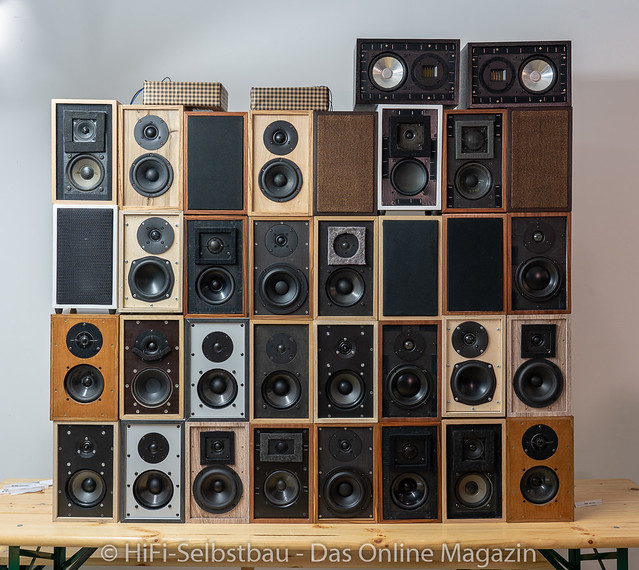
Hifi-Selbstbau - LS3/5a Battle des DIY-HiFi-Forums bei Blue Planet Acoustic
HiFi-Selbstbau - Das Online-Magazin
einseinsnull
[nur noch PN]
Könnte es sein, dass auch Hifi-Boxen damals teilweise auch als Studioboxen / Studiomonitore bezeichnet worden sind?
weiß ich nicht, zumindesten in den sechziger hatten hipster durchaus ein "studio" statt einem wohnzimmer (das muss so eine art wohnzimmer mit designermöbeln gewesen sein) aber 20-30,000 Hz ist schon echtes "fullrange", und das hat man im wohnzimmer doch eher selten.
der hauptunterschied zwischen monitoren und wohnzimmerzeugs ist ja dann eigentlich nur noch der abstrahlwinkel der mitten und höhen, und das dürfte bei konus noch nicht sooo den unterschied gemacht haben.
ansonsten sind die siebziger jahre zehn jahre vor meiner zeit, und als ich eben oben gelesen habe, dass z.b. die NS10 bereits 1978 eingeführt wurden, habe ich bemerkt irgendwie keine ahnung vom thema zu haben.^^
Zuletzt bearbeitet:
zaum6hw-y
|||||
In den "Electric Lady Studios" wurden von Eddie Kramer Westlake TM-1 benutzt:
Auszug "Led Zeppelin - All the Songs"
Auszug "Led Zeppelin - All the Songs"
gerwin
||||||||||
Ist doch heute noch so, wenn man sich mal so betrachtet oder anhört, was so alles als Monitore angepriesen wird.Könnte es sein, dass auch Hifi-Boxen damals teilweise auch als Studioboxen / Studiomonitore bezeichnet worden sind?
Plasmatron
Moderator
satchy
||||
satchy
||||
Natürlich auch JBL...https://en.wikipedia.org/wiki/JBL
Timeline

https://www.behringer-electric.de/lautsprecher-service/mythos-jbl/4425/
Timeline
- 1902 – Birth of James B. Lansing in Illinois, U.S.
- 1927 – Founding of Lansing Manufacturing Company in Los Angeles
- 1934 – Douglas Shearer from MGM designs the first speaker for the cinema. Lansing builds system components.
- 1941 – Altec Service Company acquires Lansing Manufacturing Company
- 1944 – Lansing and Hilliard redefine the reference theater speaker with model A-4, renamed " Voice of the Theatre "
- 1946 – Lansing leaves Altec and founds a new company, James B. Lansing Sound Inc.
- 1947 – JBL has a 15" speaker (38 cm), model D-130, using for the first time a 4" (100 mm) voice coil in a speaker cone
- 1949 – James. B. Lansing dies; William Thomas became president of the company
- 1954 – The "375" compression engine is the first 4-inch engine sold; its response extends to 9 kHz
- 1954 – Presentation of acoustic lenses developed by Bart N. Locanthi
- 1955 – Leo Fender integrates the D-130 model in their amplifiers, thus signalling the entry of JBL into professional music
- 1958 – Introduction of JBL Paragon stereo speaker system
- 1962 – JBL creates the first 2-way studio monitor, using a high-frequency motor lens
- 1968 – JBL launches the 3-way speaker 4310
- 1969 – Sidney Harman acquires JBL.
- 1969 – L-100, a consumer version of the 4311 is launched – this would sell over 125,000 pairs in the 70s
- 1969 – JBL components deliver sound at Woodstock and many other rock festivals
- 1973 – 4300 Series launched, including the first 4-way speaker
- 1975 – 4682 Model Line Array " Strongbox "
- 1979 – Technology "diamond surround " for control of high frequency resonances in
- 1979 – Development of Symmetrical Field Geometry (SFG)
- 1980 – Pavilion Bi-Radial ® Constant dispersion technology
- 1981 – The first Bi-Radial monitor, 4400 for the recording studio
- 1982 – Titanium is used as a material for compression engines
- 1984 – JBL acquires UREI
- 1986 – The first models of Control series introduced
- 1990 – Vented Gap Cooling technology (reduces low frequencies transducer temperature)
- 1991 – The first pro-audio speaker based on neodymium with Array Series
- 1995 – Birth of EON system
- 1995 – First Neodymium Differential Drive speaker
- 1996 – Creation of the HLA standard with Line Array Space Frame design
- 1999 – JBL used at Woodstock 1999
- 2000 – Creation of VerTec Line Array system
- 2000 – Birth of EVO, the intelligent loudspeaker controlled by DSP
- 2002 – VerTec is used for the Super Bowl, the Grammy Awards and the ceremony of the 2002 FIFA World Cup (Seoul, Korea)

https://www.behringer-electric.de/lautsprecher-service/mythos-jbl/4425/
Zuletzt bearbeitet:
satchy
||||
Gabs in den Siebzig-igern nicht auch schon die B&W 801 wie sie in den BBC Studios standen?
Ja hier die History https://www.bowerswilkins.com/our-story
living sounds
|||||||
oli
*****
JBL 4333

 www.ebay-kleinanzeigen.de
www.ebay-kleinanzeigen.de

Audio & HiFi gebraucht kaufen | eBay Kleinanzeigen ist jetzt Kleinanzeigen
Kleinanzeigen: Audio & HiFi gebraucht kaufen - Jetzt in Friedberg (Hessen) finden oder inserieren! eBay Kleinanzeigen ist jetzt Kleinanzeigen.
oli
*****
Tannoy SRM10 Little Red , SRM12 Little Red, Super Red...
Ein Paar "SRM12B Little Red" hab ich selber hier im Einsatz...gibt es Heute leider nur noch gebraucht
und immer noch schweine Teuer!
Anhang anzeigen 84354Anhang anzeigen 84355Anhang anzeigen 84356Anhang anzeigen 84357Anhang anzeigen 84358
Hier in der Nähe verkauft jemand gerade die SRM 15X.
Hui, die sind schon nicht klein, weder in der Größe noch im Preis.

Audio & HiFi gebraucht kaufen | eBay Kleinanzeigen ist jetzt Kleinanzeigen
Kleinanzeigen: Audio & HiFi gebraucht kaufen - Jetzt in Waghäusel finden oder inserieren! eBay Kleinanzeigen ist jetzt Kleinanzeigen.
Similar threads
- Antworten
- 37
- Aufrufe
- 1K
- Antworten
- 4
- Aufrufe
- 429
- Antworten
- 43
- Aufrufe
- 2K
- Antworten
- 2
- Aufrufe
- 171
- Antworten
- 17
- Aufrufe
- 1K
News
-
Beetlecrab Tempera Granular Synthesizer Talk (English) at SequencerTalk Developer Talk #207
- Gestartet von Moogulator
- Antworten: 1
-
Elektron Digitakt II - alles doppelt! 8 Takte, Viel Speicher, Kits etc.
- Gestartet von Moogulator
- Antworten: 3
-
KI stellt Depeche Mode nach - nach Umstellung wird das zu einer generischen Clone-Band-Kopie
- Gestartet von Moogulator
- Antworten: 0
-
-
-
-
19.4. Köln, Rewohlte, Roland Schappert mit Bob Humid & Hendrik Meyer
- Gestartet von Moogulator
- Antworten: 9
